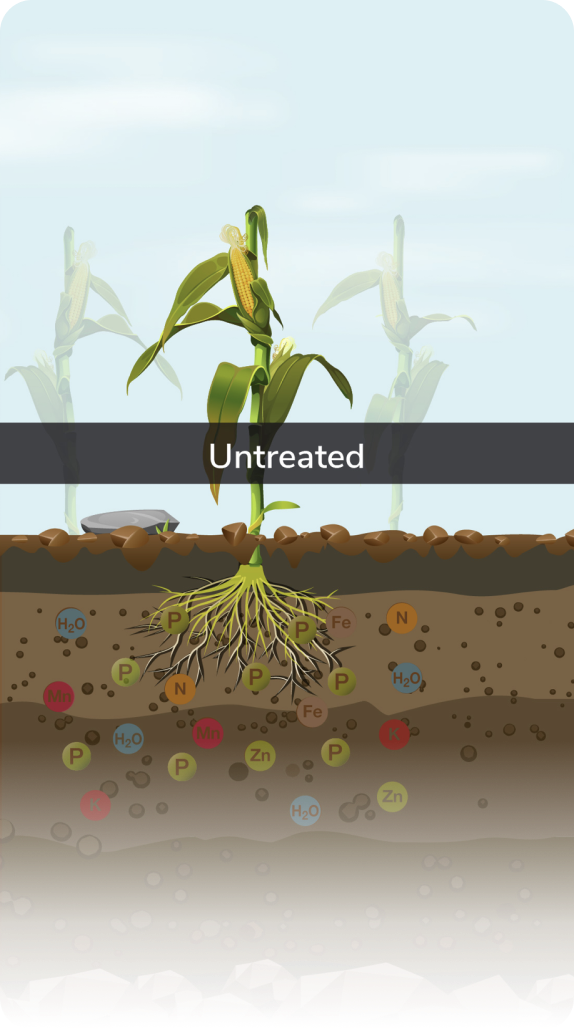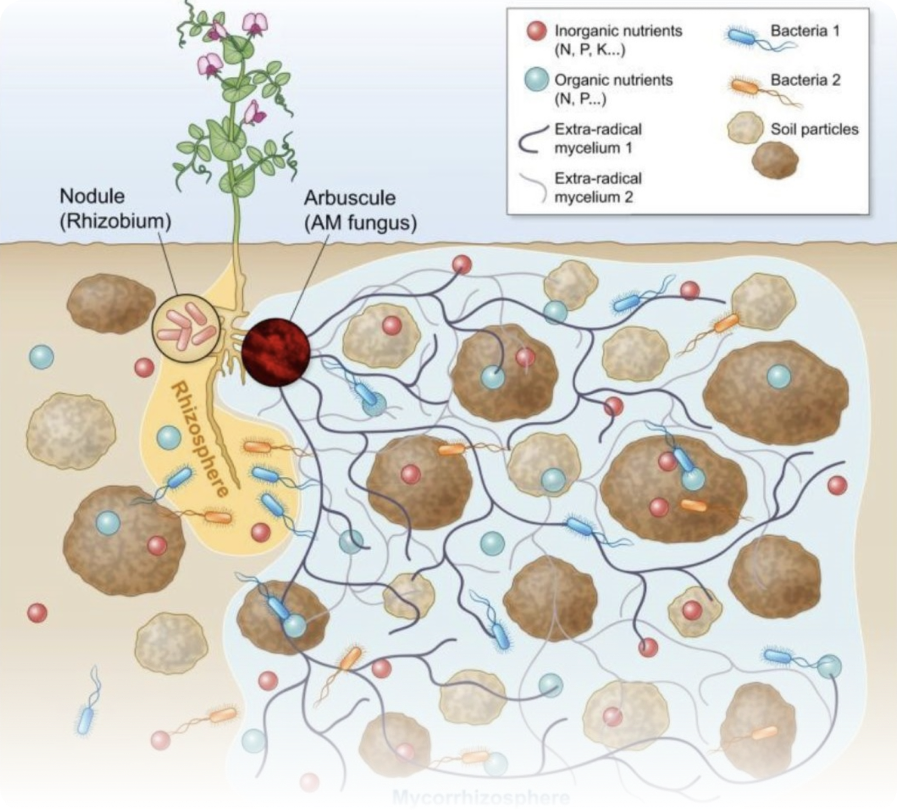Mycorrhizal Inoculants
Fungi and Roots: A Love Story
400 million years ago, the earliest plant ancestors migrated from sea to soil. Faced with the adaptive pressures of their new environment, they developed symbiotic relationships with beneficial fungi. These fungi attached themselves to and extended plant root systems, enabling mutual access to otherwise unavailable nutrients.
Known as mycorrhizae, these root-fungi symbioses comprise the natural networks that form the foundation of fertile, healthy soil.
Today, farmers feel the effects of intensive agricultural practices, which deplete mycorrhizae and abate soil health. Mycorrhizal inoculants reunite plants with their original life partners, offering farmers a safe investment in yields, soil health, and permanent soil carbon sequestration.
What is Mycorrhiza?
Symbioses between fungi (myco-)
and plant roots (-rhiza)
Mycorrhizae are ancient fungi-root symbioses that form the cornerstone of the rhizospheric ecosystem.
These partnerships effectively extend the plant root zone by 10-100x and provide the infrastructure for additional microbial communities to thrive.
The mycorrhizal extended root system supports the growth of up to 90% of all plant species, enhancing nutrient absorption, diminishing fertilizer requirements, reviving soil health, and permanently sequestering carbon.
Today, decades of intensive agricultural practices have depleted soils of their mycorrhizal populations.
Mycorrhizae are the essential foundation of the rhizosphere, the core platform underpinning soil biodiversity, and the central pathway of carbon into the soil. At Groundwork BioAg, we coined the term “Queen of Biologicals” to describe mycorrhizae’s life-giving vital significance.
Rootella Working Mechanism Biology and Agronomy in Action
Queen of Biologicals
Under the Microscope

Benefits of Mycorrhiza:
Returning life to the soil
Up to 90% of the Earth’s vascular land plant families, including most row crops, are mycotrophs – plants that form symbiotic relationships with mycorrhizal fungi. Soils rich in mycorrhizal networks can support the microbial activity necessary to sustain healthy plant life.
However, modern agricultural methods, such as tilling, fumigation, cut-and-fill leveling, and sterilization, exterminate mycorrhizae along with the target pathogens. Reintroduction of mycorrhizae in soil revives the soil’s ability to retain precious nutrients and plants’ ability to absorb them.
Plants growing in mycorrhizae-rich soil demonstrate multiple benefits, including:
- Enhanced yield due to increased nutrient and water uptake
- Reduced need for fertilizer, notably up to 50% of phosphorus
- Improved resistance to stress
- Permanent and significant carbon sequestration
With mycorrhizae, there is no such thing as unavailable phosphorus


*Plants treated with Rootella® benefit from enhanced nutrient absorption. The effect is particularly notable regarding phosphorus. A vital macro-nutrient, phosphorus tends to bind to other organic soil compounds, becoming inaccessible to plants. The Arbuscular Endomycorrhizal Fungi in Rootella chemically release soil phosphorus and mobile it actively into the roots, making it available for plant uptake.

Credits: Relations of Soil Nutrients, bacteria and mycorrhizal fungi: Wipf et. al. 2019I DOI: 10.1111/nph.15775
Mycorrhizal BioPlatform – Comprehensive Biological Solution
As the center of the rhizosphere, mycorrhizal networks collectively form a BioPlatform that enables diverse microbial soil communities to thrive.
A range of soil microbes – particularly synergistic Mycorrhizae Helper Bacteria (MHB) – utilize mycorrhizal pathways to coexist and cooperate, offering a beneficial environment for plants and other organisms through multiple ecosystem services.
We are currently expanding our Rootella product line to a Mycorrhizal BioPlatform. The Rootella Mycorrhizal Bioplatform is an end-to-end biological solution that optimizes soil health by leveraging the natural partnerships between mycorrhizae and bacteria. The synergy between beneficial bacteria and mycorrhizae within agricultural systems creates an interplay of advantages that transcend the capabilities of each organism by itself.
Benefits
Credit: the Helmholtz Centre for Environmental Research – UFZ

